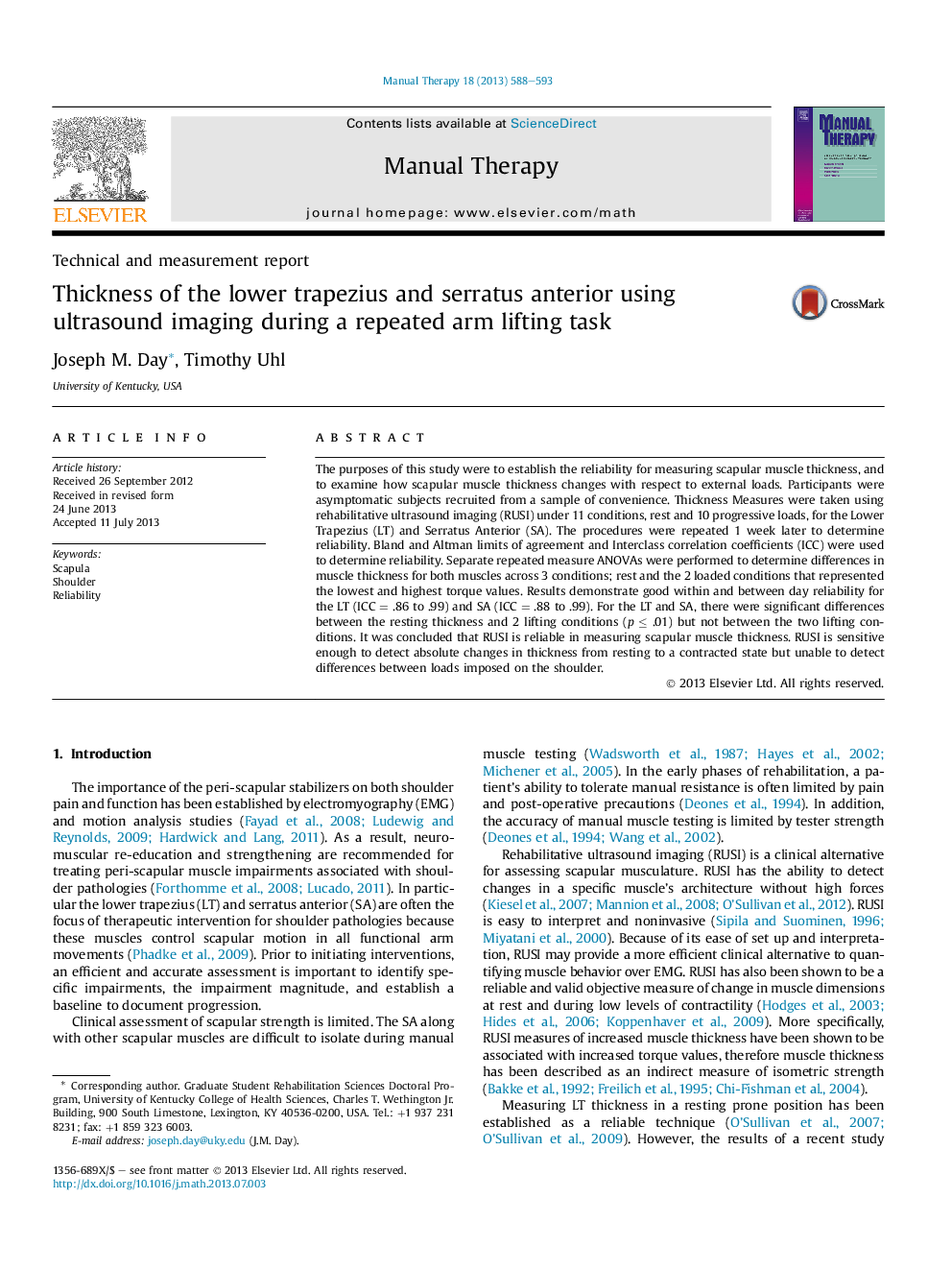| Article ID | Journal | Published Year | Pages | File Type |
|---|---|---|---|---|
| 5864860 | Manual Therapy | 2013 | 6 Pages |
Abstract
The purposes of this study were to establish the reliability for measuring scapular muscle thickness, and to examine how scapular muscle thickness changes with respect to external loads. Participants were asymptomatic subjects recruited from a sample of convenience. Thickness Measures were taken using rehabilitative ultrasound imaging (RUSI) under 11 conditions, rest and 10 progressive loads, for the Lower Trapezius (LT) and Serratus Anterior (SA). The procedures were repeated 1 week later to determine reliability. Bland and Altman limits of agreement and Interclass correlation coefficients (ICC) were used to determine reliability. Separate repeated measure ANOVAs were performed to determine differences in muscle thickness for both muscles across 3 conditions; rest and the 2 loaded conditions that represented the lowest and highest torque values. Results demonstrate good within and between day reliability for the LT (ICC = .86 to .99) and SA (ICC = .88 to .99). For the LT and SA, there were significant differences between the resting thickness and 2 lifting conditions (p ⤠.01) but not between the two lifting conditions. It was concluded that RUSI is reliable in measuring scapular muscle thickness. RUSI is sensitive enough to detect absolute changes in thickness from resting to a contracted state but unable to detect differences between loads imposed on the shoulder.
Keywords
Related Topics
Health Sciences
Medicine and Dentistry
Complementary and Alternative Medicine
Authors
Joseph M. Day, Timothy Uhl,
